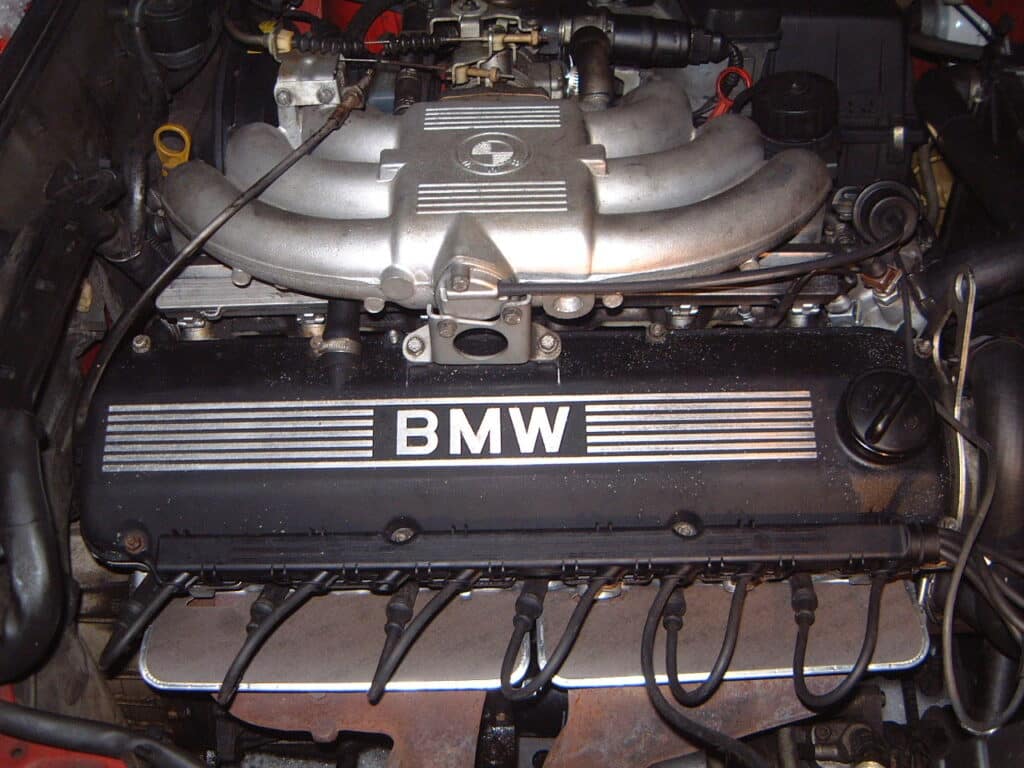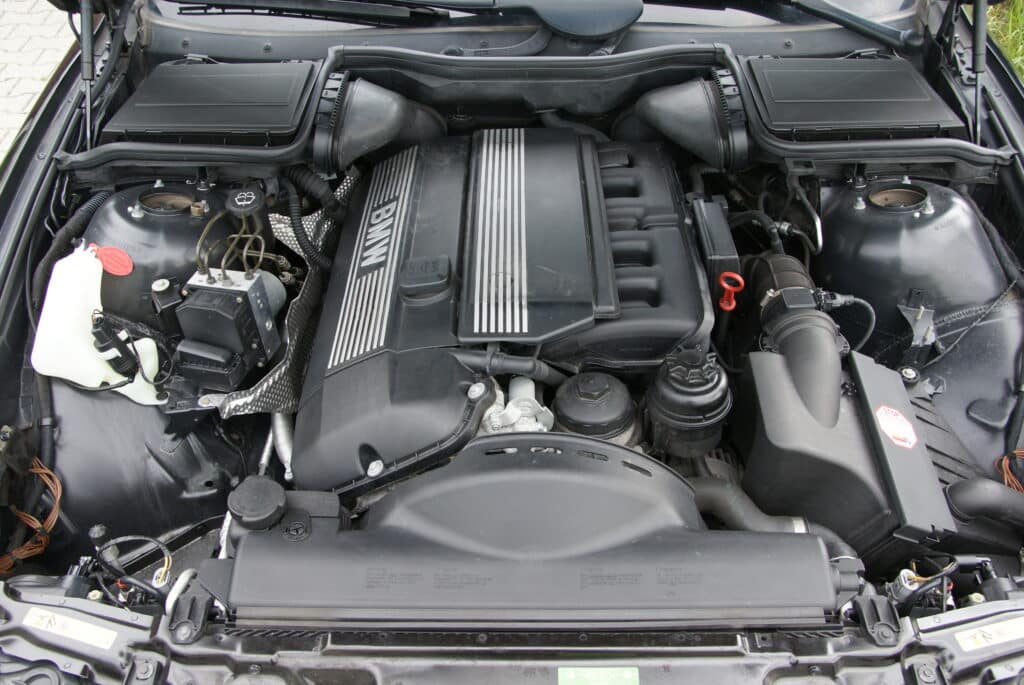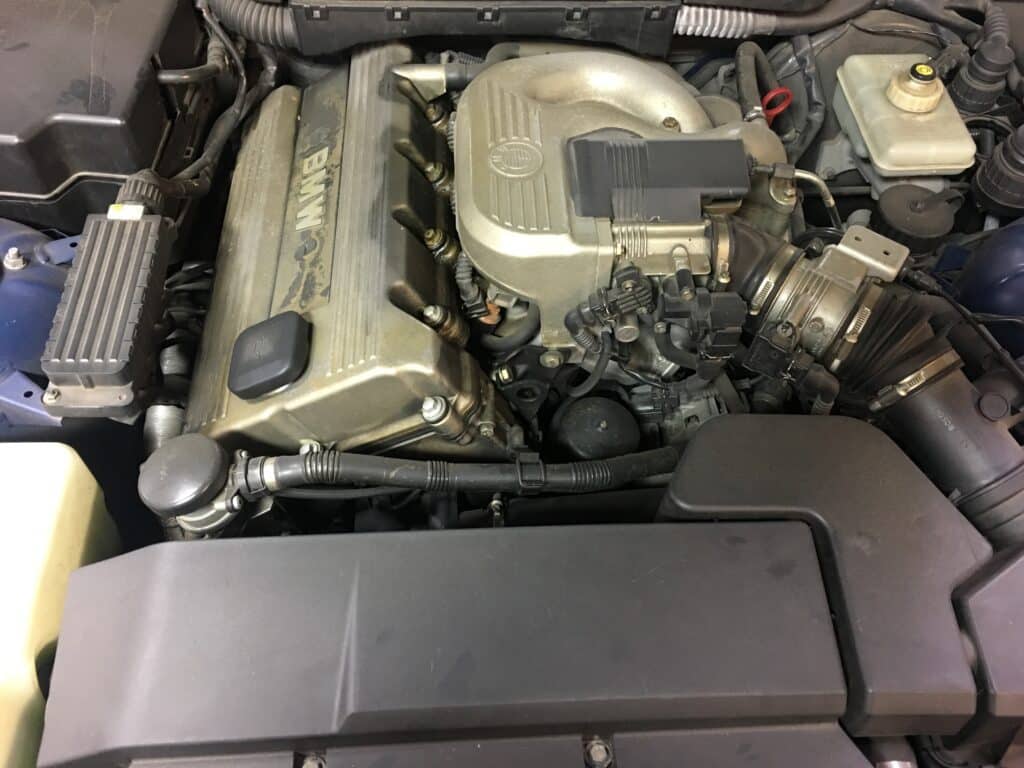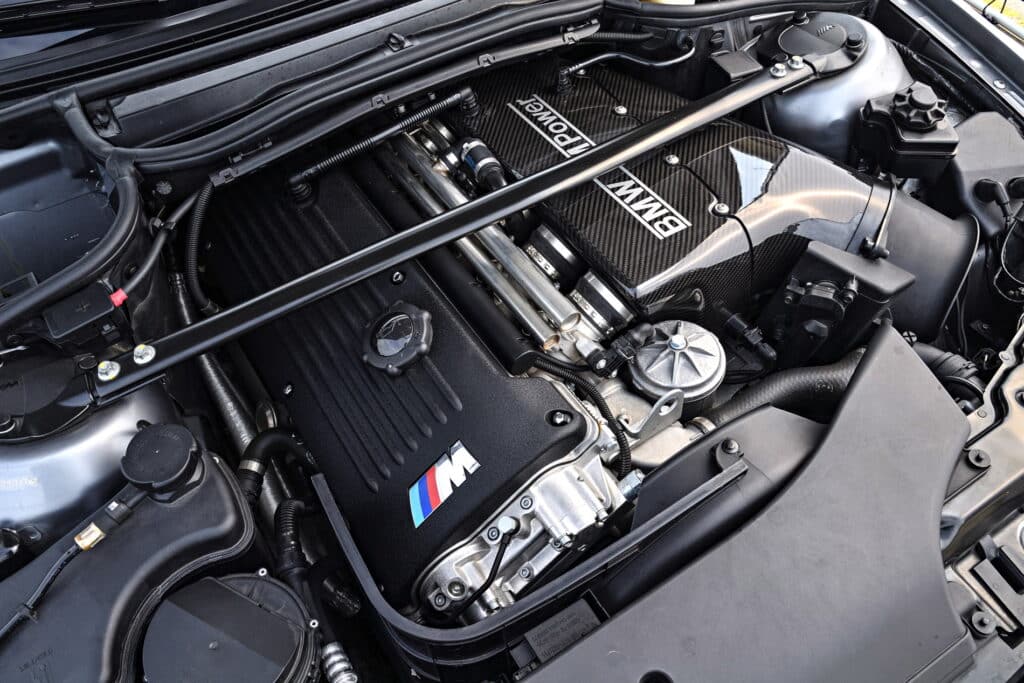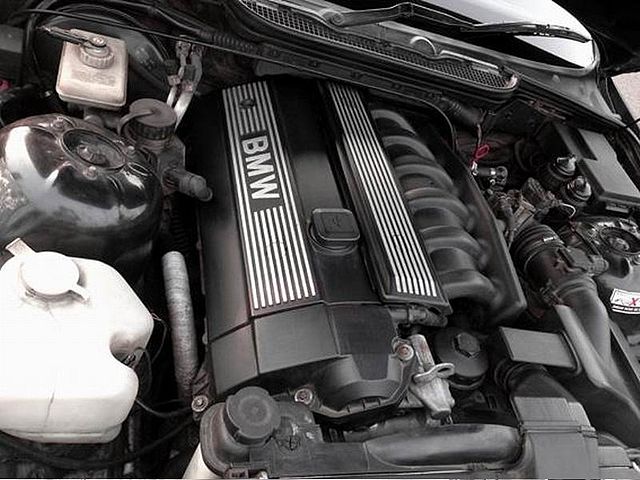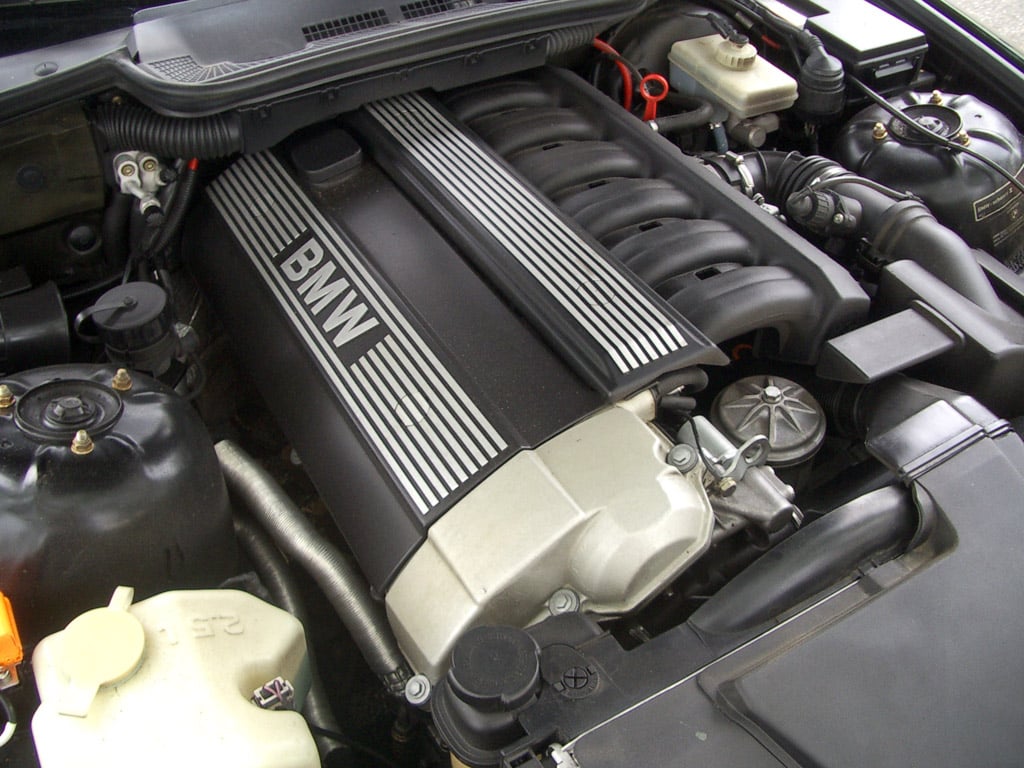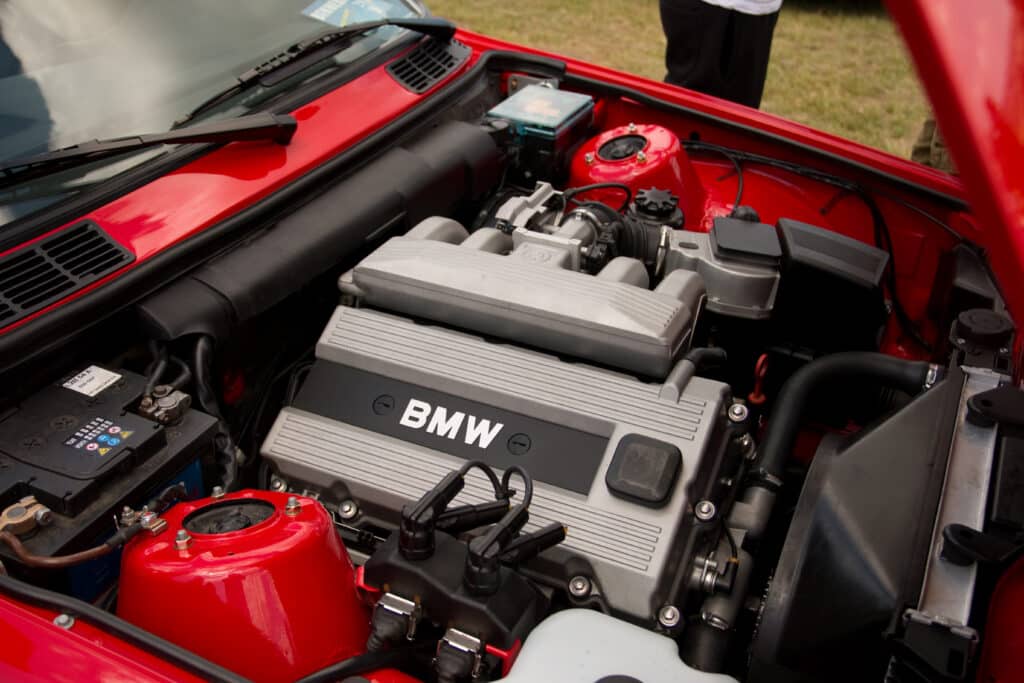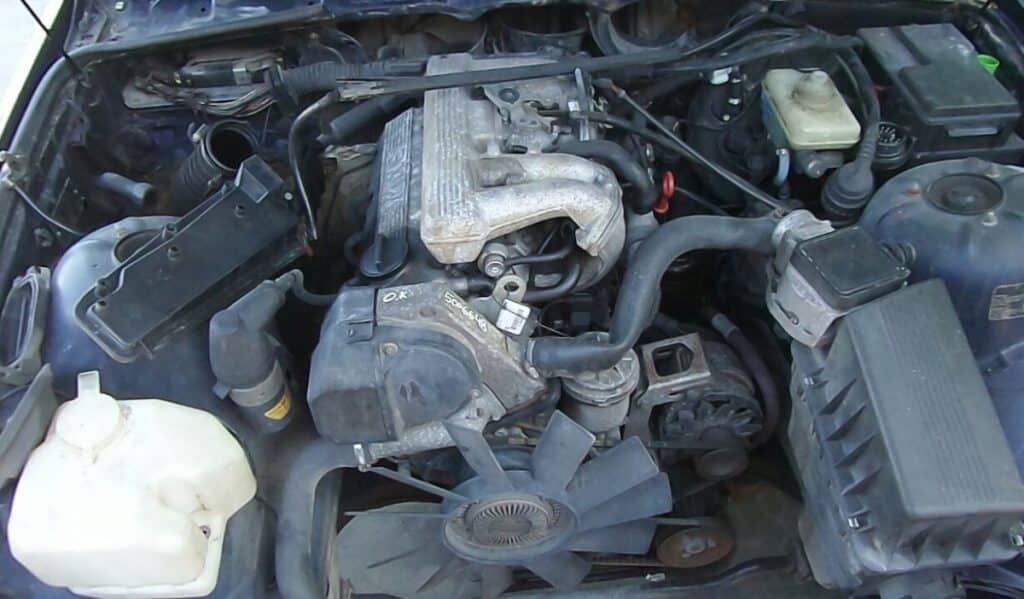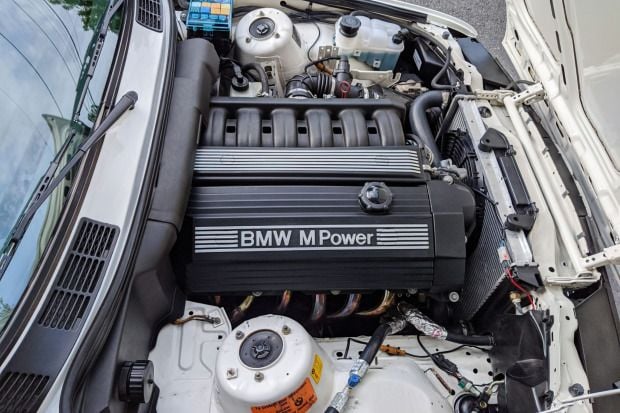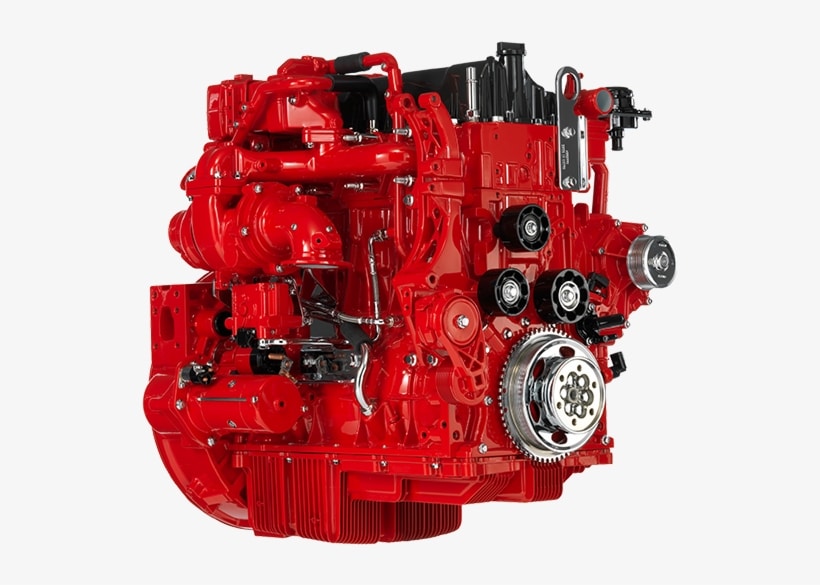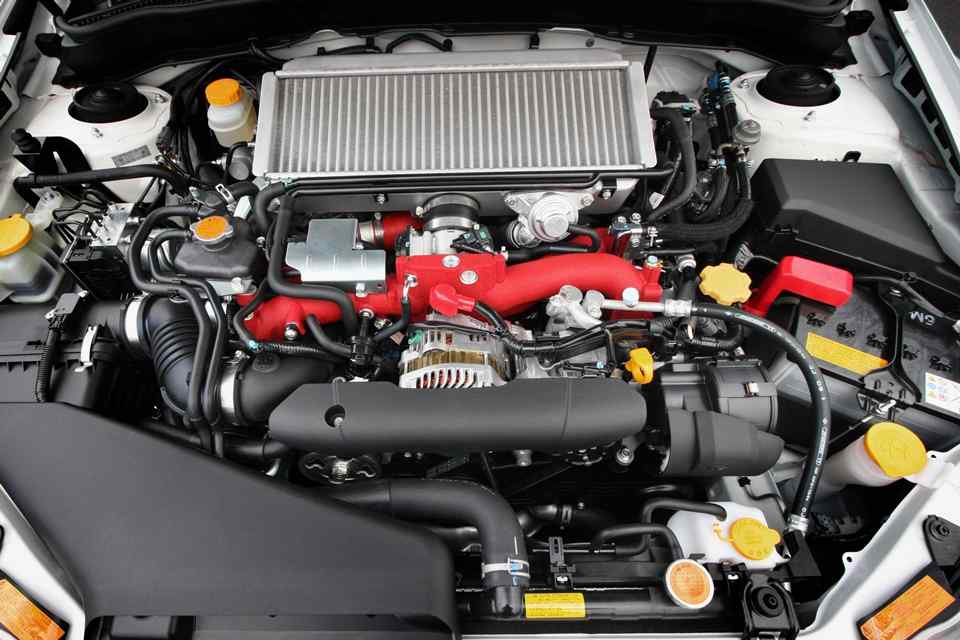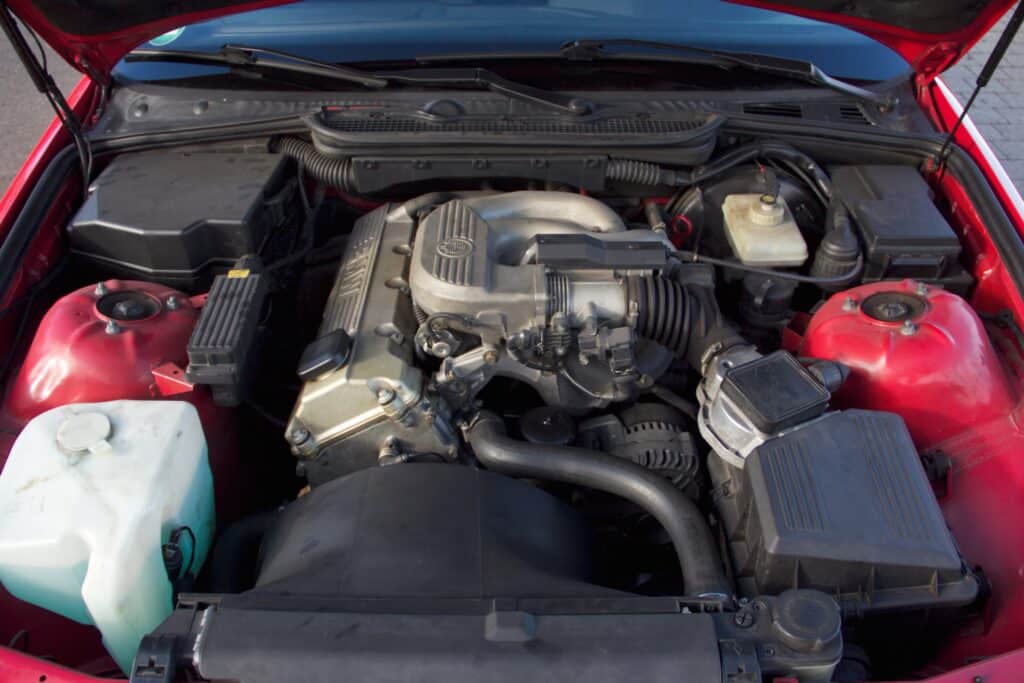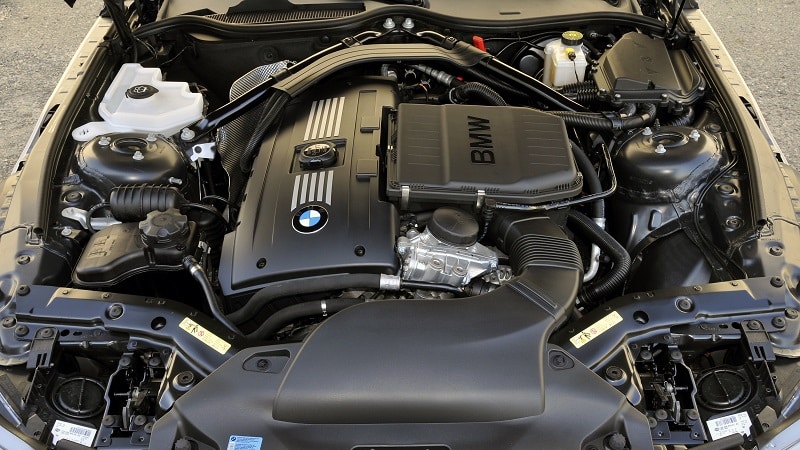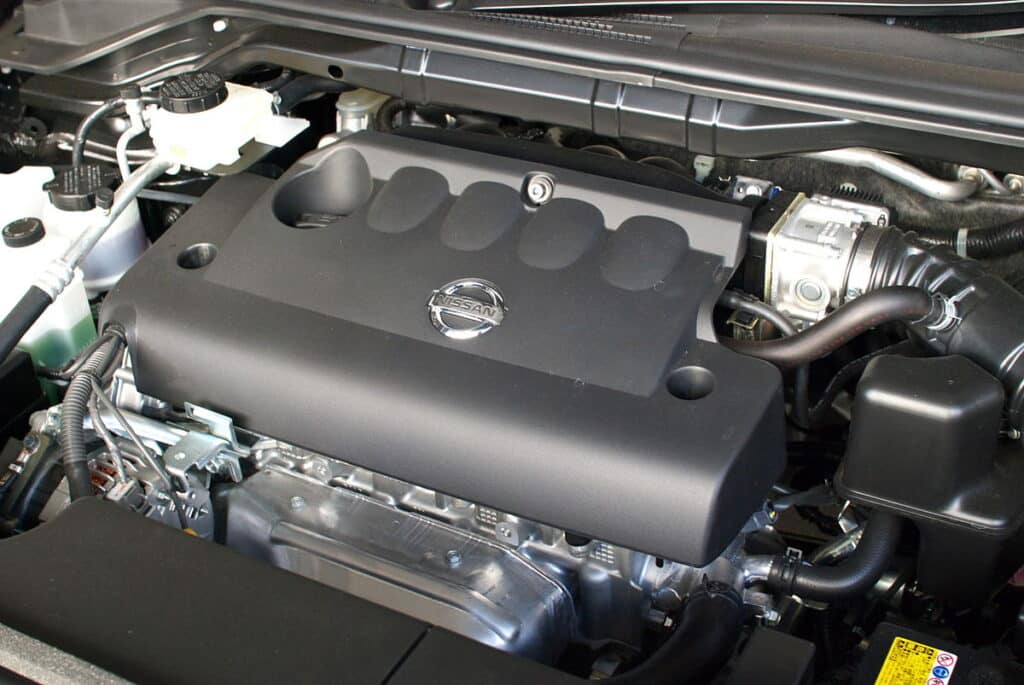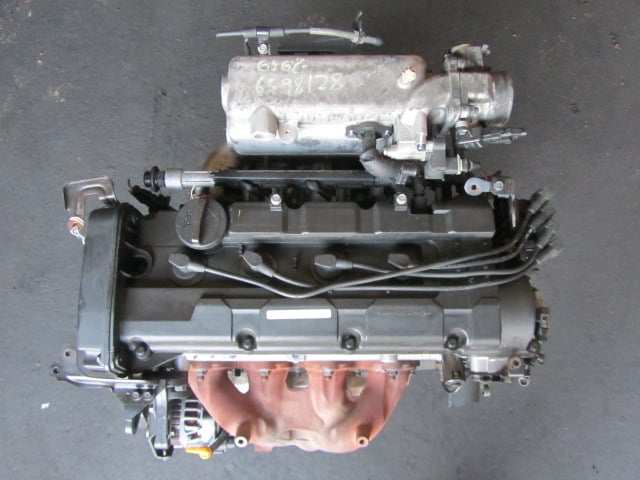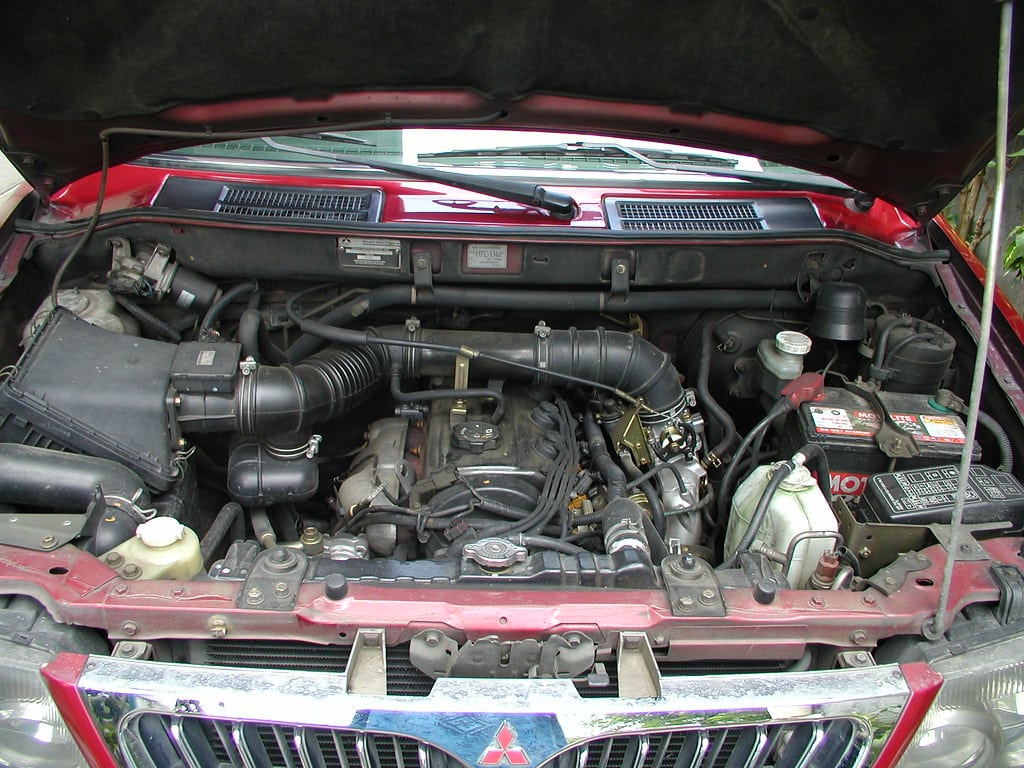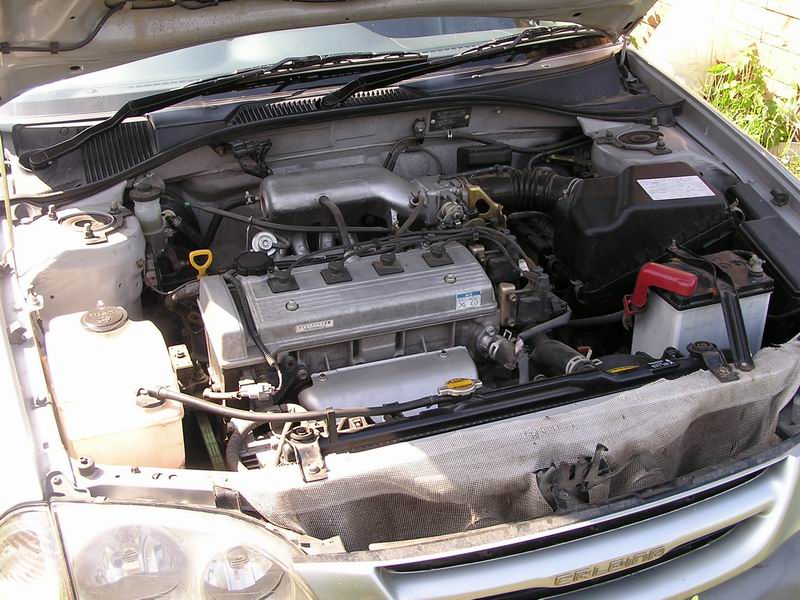The BMW S85B50 engine is a testament to BMW’s commitment to high-performance engineering. Launched in 2005, this powerplant was conceived as a detuned version of a Formula 1 V10 engine, reflecting BMW’s involvement in the pinnacle of motorsport. It is a masterpiece of engineering that was designed to bring race track prowess to the public road, powering the E60 M5 and the E63/E64 M6, some of BMW’s most exhilarating high-performance vehicles of the era.

The S85B50 represented a significant shift from BMW’s previous M engines, which were mostly inline-six or V8 configurations. This engine set a new benchmark for production car performance in the mid-2000s.
Within BMW’s storied engine development history, the S85B50 holds a special place as their first production V10 engine. It slotted into the upper echelon of BMW’s M division lineup, representing the brand’s commitment to pushing the boundaries of what was possible with a naturally aspirated power unit.
The S85 was exclusively reserved for BMW’s most prestigious M models, and unlike its V8 and inline-six siblings, it was not adapted for use in any non-M models, maintaining its status as an exclusive performance hallmark.
Overview of Performance and Engineering
The S85B50 is a 5.0-liter V10 engine renowned for its high-revving characteristics, achieving a maximum output of 507 horsepower and 520 Nm of torque. This allowed the M5 and M6 models to deliver supercar-beating performance, with the engine’s redline soaring to an astonishing 8,250 RPM.
The engine employed many advanced technologies, including bedplate construction for improved block rigidity, individual throttle bodies for lightning-quick throttle response, and BMW’s VANOS variable valve timing system that optimized performance across a wide rev range.
The S85 was also designed with a high 12.0:1 compression ratio, contributing to its explosive power delivery and responsive nature.
Every aspect of the S85B50 was designed with performance in mind, from its semi-dry-sump lubrication system, which ensured oil supply during high-speed cornering, to its ion-sensing knock control, which used spark plugs as sensors to detect and prevent detonation.
The S85B50 was not just an engine; it was a declaration of BMW’s engineering prowess, a blend of luxury sedan comfort with the heart of a race car beating under the hood.
It marked a pinnacle in BMW’s naturally aspirated engine technology before the shift towards turbocharging for efficiency and performance gains in later years.
BMW S85 Engine Specs
The BMW S85B50 is a marvel of modern engine design, blending power and precision into an engineering masterpiece. Here, we delve into the technical specifications that make the S85B50 an icon of BMW’s M Division.
At the heart of the S85B50’s design is a 90-degree V10 layout, which inherently balances compact size and optimal weight distribution, critical for the dynamic handling characteristics of the M5 and M6. This naturally aspirated engine displaces 5.0 liters, with a total of 10 cylinders breathing through 40 valves (four per cylinder).
| Specification | Detail |
|---|---|
| Engine Type | 90-degree V10 |
| Displacement | 4999 cc |
| Power Output | 507 HP @ 7,750 RPM |
| Torque | 520 Nm @ 6,100 RPM |
| Bore | 92 mm |
| Stroke | 75.2 mm |
| Compression Ratio | 12.0:1 |
| Valve Configuration | 40 valves (4 per cyl) |
| Redline | 8,250 RPM |
| Construction | Aluminum block and head |
| Engine Management | BMW MSS65 |
| Fuel Delivery | Sequential MPI |
| Lubrication System | Semi-dry sump |
| Emission Standard | Euro 4 |
It’s constructed with an aluminum block and heads, designed to keep weight as low as possible without sacrificing strength or durability. Using a bedplate design adds to the block’s structural integrity, a technique often found in racing engines.
The S85B50 boasts a displacement of 4999 cc, translating into a power output that was nothing short of impressive at its launch. With 507 horsepower (378 kW) at 7,750 RPM and a torque peak of 520 Nm at 6,100 RPM, the engine’s figures are a testament to BMW’s ability to extract a significant amount of power from a naturally aspirated unit.
The S85B50’s bore and stroke measurements are 92 mm and 75.2 mm, respectively. These dimensions contribute to the engine’s high-revving nature, allowing for a freer-flowing, more instantaneous power delivery. Coupled with a high compression ratio of 12.0:1, the S85B50 is tuned for high performance. This high compression ratio improves power and enhances the engine’s efficiency by extracting more energy from each drop of fuel.
One of the most exhilarating aspects of the S85B50 is its ability to rev. The redline is set at an impressive 8,250 RPM, and the engine pulls strongly all the way up to this limit. This high redline is made possible by the engine’s lightweight internals, such as the forged crankshaft and titanium connecting rods, which reduce rotational inertia.
This engine doesn’t just rev quickly; it’s also smooth and linear in its power delivery, creating a symphonic crescendo of power as the revs climb.
The specifications of the BMW S85B50 not only tell the story of its performance capabilities but also highlight BMW’s dedication to precision engineering. This engine was designed to deliver an emotional driving experience that connects the driver to the road through the sheer force of its engineering prowess.
With a formidable blend of advanced technology and classic, high-revving power, the S85B50 remains a benchmark for naturally aspirated performance engines.
BMW M5 E60 S85 V10 Sound
What Cars Have A BMW S85B50?
- BMW M5 E60
- BMW M6 E63
Performance and Horsepower of the BMW S85B50 Engine
The BMW S85B50 engine is a paragon of high-performance engineering, delivering a blend of raw power and sophisticated technology that propels the BMW M models into the upper echelons of sports car royalty.
Maximum Horsepower and Torque Figures
Boasting a maximum horsepower of 507 at a screaming 7,750 RPM and a robust torque figure of 520 Nm peaking at 6,100 RPM, the S85B50 engine commands respect on the track and exhilaration on the open road. This power output is not just about the numbers; it’s how the engine delivers it — with a smooth, linear power band that keeps pulling all the way to the redline.
Performance in M Models (e.g., M5 and M6)
In the M5 and M6, this V10 engine transforms the cars into high-performance machines capable of sprinting 0 to 100 km/h (62 mph) in just 4.7 seconds. The M5, a luxury sports sedan, and the M6, a sleek sports coupe, both benefit from the engine’s rev-happy nature, making them as capable on a spirited Sunday drive as they are on the racetrack.
Comparison with Other BMW Engines
When compared with BMW’s other performance engines, such as the S65 V8 or the later turbocharged V8s and inline-6s, the S85B50 stands out for its naturally aspirated configuration, which offers a purity of response that turbocharged engines struggle to match
The immediate throttle response and the high-revving peak power give the S85B50 a distinct character, one that is less about the brute force of turbocharged torque and more about the finesse of power building with revs.
The character of this engine stands out distinctly within BMW’s lineup, offering a driving experience that resonates deeply with purists. It’s not merely an engine that propels a car; it ignites the soul, transforming each drive into a remarkable event and every surge of acceleration into a symphony of mechanical brilliance.
With the S85B50, BMW didn’t just make an engine; they created a legend that continues to captivate enthusiasts and collectors alike.
Engine Design and Technology of the BMW S85B50
The BMW S85B50 engine is a masterpiece of precision engineering, representing a confluence of advanced materials, innovative design, and cutting-edge technology. This powerplant is a testament to BMW’s relentless pursuit of the ultimate driving machine.
Advanced Materials and Construction
Constructed with an aluminum cylinder block and heads, the S85B50’s lightweight yet sturdy architecture is a feat of modern engineering. The use of lightweight materials extends to the internals, with forged aluminum pistons and titanium connecting rods reducing rotational mass and allowing the engine to rev with breathtaking alacrity.
These advanced materials improve performance and enhance reliability, as they can withstand the high stresses of aggressive driving.
Valve and Camshaft Configuration
At the heart of the S85B50’s valve train is a double-VANOS system, which controls the timing of both the intake and exhaust camshafts. This system dynamically adjusts valve timing, optimizing the engine’s breathing ability across the rev range.
Ten individual throttle bodies, one per cylinder, ensure precise air control, contributing to the sharp throttle response that drivers of the M5 and M6 have come to adore.
Innovative Technologies (e.g., VANOS)
VANOS, BMW’s variable valve timing technology, is the S85B50’s performance cornerstone. Adjusting the camshaft angle gives VANOS more power, better fuel economy, and reduced emissions. This technology is complemented by a sequential manual gearbox (SMG) that provides rapid-fire gear changes, keeping the engine in its optimal power band during spirited driving.
The combination of high-strength, lightweight materials, an intricate valve and camshaft configuration, and the integration of innovative technologies like VANOS culminates in an engine that not only pushes the boundaries of performance but also reflects BMW’s dedication to automotive excellence.
The S85B50 doesn’t just power a vehicle; it delivers a visceral experience that is both exhilarating and uniquely BMW, proving that at the core of every great car is a great engine.
Engine Reliability and Longevity of the BMW S85B50
The BMW S85B50 engine, revered for its high performance, is also the subject of scrutiny when it comes to reliability and longevity. Engineered to deliver peak power and response, it requires meticulous maintenance to uphold its performance standards over time.
Common Wear and Tear Issues
Several common issues have been noted with the S85B50 that owners should be vigilant about. Rod bearings are one such critical component; they are known to wear prematurely, which can lead to catastrophic engine failure if not addressed.
Another known issue is the VANOS system, which can suffer from solenoid failure or oil pressure issues, affecting the engine’s timing and performance. The throttle actuators, which control the individual throttle bodies, are also prone to wear, leading to uneven idling and loss of power.
Lifespan Expectancy
The lifespan of the S85B50 engine can vary significantly depending on maintenance and driving habits. Engines that are well-maintained and not subjected to frequent high-performance demands can see lifespans well into the 100,000-mile range and beyond.
However, those used more aggressively or with deferred maintenance may encounter issues much sooner.
Maintenance Tips for Longevity
Regular and comprehensive maintenance is essential to maximize the lifespan and reliability of the S85B50. Here are some key tips for preserving this engine:
- Frequent Oil Changes: Due to the high-performance nature of the S85B50, oil degrades quicker than in less stressed engines. Frequent oil changes with high-quality lubricants can help protect the engine’s internals, particularly the rod bearings.
- Monitoring VANOS System: Regular diagnostics can catch VANOS-related issues early before they lead to more significant problems.
- Throttle Actuator Check: Keep an eye on the throttle actuators and have them inspected periodically to prevent power delivery issues.
- Cold Start Protocol: Avoid revving the engine hard before it reaches optimal operating temperatures to minimize wear on the bearings and internal components.
- Use of Quality Parts: When replacement is necessary, use high-quality or OEM parts, especially for critical components like rod bearings.
- Professional Inspection: Regular, detailed inspections by a BMW specialist can catch early signs of wear and prevent them from escalating.
- Adherence to Service Intervals: Follow BMW’s recommended service intervals diligently. This includes spark plug replacement, coolant flushes, and inspection of the semi-dry-sump lubrication system.
The S85B50 engine in your BMW M car is a high-performance powerplant designed for exhilarating driving experiences. Follow the recommended maintenance schedule to keep it running in peak condition.
Regular care and inspections ensure the longevity and reliability expected of this precision BMW engine. It not only prevents untimely breakdowns but preserves the engine’s unique dynamics that make your M car a joy to drive.
Proper maintenance is about more than just keeping your BMW on the road, and it safeguards the incredible performance that makes it a BMW M. Adhering to the guidelines protects your investment and maintains the S85B50’s capabilities – so you get to experience the powerful handling you expect from such a finely engineered driving machine.
Known Engine Problems and Solutions for the BMW S85B50
The BMW S85B50 engine is a high-performance marvel, but like any complex machine, it has known issues that owners should be aware of. Understanding these common problems and their solutions can help maintain the engine’s formidable performance and extend its life.
Rod Bearing Failures
Problem: One of the most well-documented issues with the S85B50 is the premature wear of rod bearings. These bearings are crucial as they allow the connection rods to rotate freely on the crankshaft. When they fail, they can lead to complete engine failure.
Solution: The solution involves preemptive replacement of the rod bearings with upgraded units with a better wear rating. Additionally, using higher-quality oils and more frequent oil changes can reduce the wear rate.
| Issue | Solution | Notes |
|---|---|---|
| Rod Bearing Wear | Replace with upgraded bearings | Use bearings with improved materials and coatings |
| Frequent oil changes | High-quality oil with proper viscosity |
VANOS System Issues
Problem: The Variable Nockenwellen Steuerung (VANOS) system can suffer from solenoid failure, oil pressure issues, or seal degradation. This can lead to reduced engine performance and increased fuel consumption.
Solution: Regular maintenance and inspection can catch VANOS issues before they become serious. Solenoid replacement or a complete VANOS overhaul can restore engine performance.
| Issue | Solution | Notes |
|---|---|---|
| VANOS Solenoid Failure | Replace solenoids | Genuine parts recommended |
| VANOS Seal Degradation | Replace seals and gaskets | Periodic inspection advised |
Throttle Actuator Problems
Problem: The S85B50 engine uses individual throttle actuators for each cylinder bank, and these can fail due to gear wear or electronic issues, leading to reduced engine response and power.
Solution: Replacement of the throttle actuators with updated versions or repairing them with improved internal gears can solve this issue. Regular checks can prevent sudden failures.
| Issue | Solution | Notes |
|---|---|---|
| Throttle Actuator Failure | Replace or repair actuators | Use upgraded internals when repairing |
SMG Gearbox Reliability
Problem: The Sequential M Gearbox (SMG) can be a point of contention for reliability, with some drivers experiencing jerky shifts or pump failures that can lead to the gearbox entering a fail-safe mode.
Solution: Regular software updates and maintenance can keep the SMG system functioning smoothly. In the event of pump failure, replacing the pump or upgrading to a more reliable unit can resolve the issue.
| Issue | Solution | Notes |
|---|---|---|
| SMG Pump Failure | Replace with OEM or upgraded pump | Ensure proper gearbox calibration after replacement |
| Jerky Shifts | Software updates | Updates can improve shift smoothness and gearbox behavior |
As a BMW M owner, be vigilant about promptly addressing any issues that may arise with your S85B50 engine. Known problems left unattended can escalate, so it’s crucial to be proactive with maintenance. At the first sign of trouble, diagnose the problem accurately and implement the proper solution. Diligent care and quick action can optimize your engine’s performance and longevity.
By taking a hands-on approach and addressing problems early, you can enjoy the exhilarating power of your M vehicle for many thrilling miles ahead. With some attentive care, your finely tuned S85B50 will continue delivering the heart-pounding performance you expect from the ultimate driving machine.
Timing System: Belt or Chain?
The BMW S85B50 engine, like all modern BMW engines, employs a timing chain rather than a timing belt. This choice reflects BMW’s commitment to durability and reduced maintenance for their high-performance powertrains.
Timing Configuration
The S85B50 uses a double-row timing chain to synchronize the crankshaft with the camshafts, ensuring precise timing for the engine’s complex valve operation. This setup is favored for its longevity and ability to handle a performance engine’s high stress and strains.
The timing chain is a crucial component, as it must withstand the high rotational speeds and the constant changes in engine load.
Maintenance and Replacement Intervals
Unlike timing belts requiring regular replacement at specific intervals, timing chains are designed to last the engine’s lifetime under normal operating conditions. However, “lifetime” is a term that can vary based on many factors, such as driving habits and the quality of maintenance that the engine receives.
While the timing chain itself is robust, the tensioners and guide rails that keep it in place can wear out. It is common practice to inspect these components periodically, particularly during other maintenance work that grants access to the timing chain assembly.
Here’s a table of indicators that the timing components may need attention:
| Indicator | Potential Issue | Suggested Action |
|---|---|---|
| Rattling noise on start-up | Worn chain tensioner/guides | Inspect and replace if necessary |
| Irregular engine performance | Stretched chain or worn sprockets | Diagnostic inspection |
| Check engine light/service codes | Timing advance/retard errors | Check VANOS system and chain assembly |
While the timing chain is engineered for durability, it’s essential for owners to remain vigilant for signs of wear and to maintain proper oil levels and quality, as the engine oil lubricates the chain. Regular oil changes and using the correct grade of oil can significantly contribute to the health of the timing chain and the engine as a whole.
Owners should consult with a BMW specialist for personalized advice based on their vehicle’s condition and usage patterns.
Interference vs. Non-Interference Design
In the realm of internal combustion engines, the terms “interference” and “non-interference” refer to the relationship between the engine’s pistons and valves. The distinction is crucial for understanding an engine’s potential risks and design philosophy.
Definition and Relevance
An interference engine is designed so that the pistons and valves occupy the same space inside the cylinder, but at different times. This design allows for higher compression ratios and better performance but carries a risk: if the timing belt or chain fails, it can lead to the valves and pistons colliding, often resulting in significant engine damage.
Conversely, a non-interference engine is designed always to have a clear space between the pistons and valves, even if the timing mechanism fails. While this design avoids the catastrophic damage associated with timing failures, it typically does so at the expense of compression and overall performance efficiency.
S85B50 Engine Characteristic
The BMW S85B50 engine is an interference design. This characteristic underscores the engine’s high-performance nature, allowing for the high compression ratio and the efficient filling of the combustion chamber that contribute to its impressive power output. The interference design of the S85B50 is part of what enables its high-revving capabilities and responsive power delivery.
However, this design choice means that maintaining the integrity of the timing chain system is paramount. The precise timing between valve and piston movement is critical. While the S85B50’s timing chain is designed to last, ensuring that it is in good condition, along with its associated tensioners and guides, is vital to prevent engine damage.
Oil Capacity and Recommended Types
Proper lubrication is paramount for the health and performance of any engine, especially one as finely tuned as the BMW S85B50. The choice of oil and adherence to change intervals are critical components of engine maintenance that can significantly affect the longevity and reliability of this V10 powerhouse.
Ideal Oil Types for S85B50
The S85B50 engine was engineered to operate at high efficiency and performance levels, which require a specific type of oil to maintain. The ideal oil types for this engine are:
- Fully Synthetic Oils: These oils are recommended due to their superior high-temperature stability and high shear resistance, which are essential for the high-revving nature of the S85B50.
- Specific Viscosity Grades: BMW typically recommends oils with a viscosity of 10W-60 for the S85B50, which is tailored to cope with the high thermal demands and to provide adequate protection at all operating temperatures.
Oil Capacity and Change Intervals
- Oil Capacity: The S85B50 engine has an oil capacity of approximately 9.3 liters (9.8 quarts) when including the filter.
- Change Intervals: BMW suggests oil change intervals every 15,000 miles or 12 months, whichever comes first. However, many enthusiasts and specialists recommend more frequent changes, such as every 7,500 miles, especially if the engine is subjected to high-performance driving conditions.
Importance of Oil Quality and Viscosity
- High-Quality Oil: Using high-quality, fully synthetic oil ensures the engine components are adequately protected against wear, which is particularly crucial for components like the rod bearings, which are a known weak point.
- Correct Viscosity: The 10W-60 viscosity ensures that the oil remains thick enough to protect the engine at high operating temperatures while still flowing freely when the engine is cold to reduce wear during startup.
- Performance Implications: Proper viscosity also plays a role in maintaining the VANOS system’s performance, which relies on consistent oil pressure to adjust timing accurately.
By adhering to these guidelines, owners of BMW vehicles equipped with the S85B50 engine can maintain the peak performance and longevity of their engines:
- Use fully synthetic 10W-60 oil for optimal performance.
- Check and top off the oil level regularly due to the engine’s high consumption during spirited driving.
- Consider more frequent oil changes than the manufacturer’s recommendation if the vehicle is used for performance driving.
- Always use high-quality oil filters to ensure the oil remains free of contaminants.
Following these practices will help ensure that the S85B50 engine maintains its exceptional performance throughout its lifespan.
Fuel Consumption Rates of the BMW S85B50 Engine
The BMW S85B50 engine, a high-performance V10 found in the M5 and M6 models, is known for its exhilarating power and speed, which naturally comes with a trade-off in terms of fuel economy.
City and Highway MPG Estimates
The fuel consumption rates for the S85B50 engine reflect its performance pedigree:
- City MPG: In urban settings, the engine’s thirst for fuel is more pronounced due to stop-and-go traffic and the frequent need to tap into its power reserves. Drivers can expect to see MPG figures in the low teens.
- Highway MPG: The S85B50 is more at ease on the highway, allowing it to achieve slightly better fuel efficiency. Estimates for highway cruising can rise into the high teens or low twenties under optimal conditions.
Fuel Type and Octane Requirements
To maintain the performance and health of the S85B50 engine, BMW recommends the following:
- Fuel Type: Premium unleaded fuel is a must. The engine’s high compression ratio requires high-octane gasoline to prevent pre-ignition and knocking.
- Octane Requirements: The minimum octane rating should be 91, but a rating of 93 or higher is preferred where available for optimal performance and engine care.
Tips for Improving Fuel Efficiency
While the S85B50 is not designed with fuel conservation as a priority, there are several strategies drivers can employ to maximize efficiency:
- Consistent Maintenance: Regular servicing, including spark plug and air filter changes, ensures the engine runs smoothly and efficiently.
- Driving Habits: Smooth acceleration and avoiding aggressive driving can reduce fuel consumption significantly.
- Proper Tire Inflation: Keeping tires inflated to the correct pressure reduces rolling resistance.
- Weight Reduction: Remove unnecessary weight from the vehicle to help decrease fuel consumption.
- Use of Cruise Control: When on the highway, using cruise control can help maintain a steady speed, which is more fuel-efficient than variable throttle inputs.
The S85B50 engine in your BMW M car is built for thrilling performance. This high-revving V10 needs to be driven hard to deliver its best.
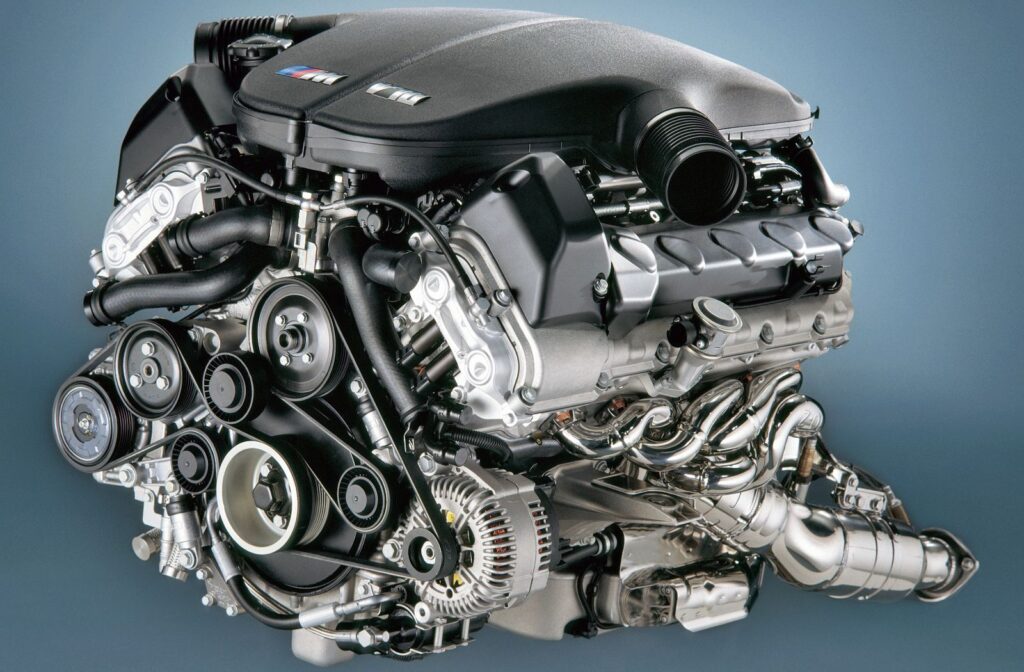
However, following some best practices, you can still achieve reasonable fuel efficiency from this powerplant. Use a light throttle foot when possible, moderate speeds, and don’t overwork the engine. Perform regular maintenance and make sure components like spark plugs are in top shape. And of course, premium fuel is a must. Understand that a performance engine like the S85B50 trades off economy for power.
But with care and restraint when conditions allow, you can balance fuel efficiency and the exhilaration this engine is made for. Respect its performance spirit, drive it as intended, and practice conservation whenever practical.
Engine Firing Order and Ignition System
The firing order of an engine is the specific sequence in which the spark plugs fire, igniting the fuel in each cylinder. This sequence is meticulously engineered to balance the engine’s power delivery, minimize vibrations, and maintain smooth operation.
Explanation of Firing Order
The BMW S85B50 engine has a firing order of 1-6-5-10-2-7-3-8-4-9. This sequence is designed to optimize the balance and performance of the V10 configuration. By firing the cylinders in this order, BMW engineers reduced engine vibrations and ensured a harmonious power delivery throughout the rev range.
The unique firing order contributes to the S85B50’s characteristic sound—a deep, resonant growl at low revs that builds into a high-pitched wail at the upper end of the tachometer.
Spark Plug Types and Gap Settings
For the S85B50, BMW recommends high-performance spark plugs that can withstand the engine’s high temperatures and demanding operating conditions:
- Spark Plug Types: The S85B50 requires high-quality iridium or platinum-tipped spark plugs, which offer superior longevity and consistent spark delivery.
- Gap Settings: The spark plug gap for the S85B50 is typically set between 0.8 mm to 1.0 mm. This precise gap is critical for proper ignition and efficient combustion.
Ignition System Overview
The ignition system of the S85B50 is a direct ignition system with a coil-on-plug design. This setup eliminates the need for traditional spark plug wires by placing an individual ignition coil directly on top of each spark plug. This direct approach allows for more precise timing and a stronger spark, which is crucial for the high-revving nature of the engine:
- Direct Ignition System: Provides a more robust and accurate spark, enhancing engine efficiency and power.
- Coil-on-Plug: Reduces electrical interference and energy loss, resulting in a more reliable ignition process.
The firing order and the advanced ignition system are vital to the S85B50’s performance. It ensures each cylinder fires at the exact right moment, which is essential for the smooth running of this high-performance engine.
Regular ignition system maintenance, including timely spark plug replacement and coil checks, will help maintain the engine’s vigor and vivacity.
Spark Plugs and Gap Specifications
Spark plugs are vital to an engine’s ignition system, providing the spark that ignites the air/fuel mixture. The efficiency of this ignition is crucial for engine performance, fuel efficiency, and emissions control, particularly in a high-performance engine like the BMW S85B50.
Recommended Spark Plugs
For the S85B50 engine, BMW specifies high-performance spark plugs that can cope with the extreme conditions of a high-revving, naturally aspirated engine. The recommended spark plugs are typically of iridium or platinum type due to their durability and ability to maintain a sharp spark edge over many miles of use:
- Iridium Spark Plugs: These are known for their longevity and ability to withstand high temperatures, making them ideal for the S85B50 engine.
- Platinum Spark Plugs: While not as durable as iridium, platinum plugs offer excellent longevity and performance.
Gap Settings and Tuning
The spark plug gap is the distance between the center and ground electrode. For the S85B50 engine, this gap is critical as it affects the spark plug’s ability to ignite the air/fuel mixture efficiently:
- Factory Gap Settings: The recommended spark plug gap for the S85B50 is generally set between 0.8 mm to 1.0 mm. This setting is optimized for stock engines without any significant modifications.
- Tuning Adjustments: If the engine has been tuned or modified, it may require a different gap setting. Due to increased cylinder pressures, tunnel engines might need a tighter gap to prevent misfires at high RPMs.
A proper spark plug gap is crucial for S85B50 engines. An incorrect gap can cause misfires, poor fuel economy, and power loss. When replacing plugs, a feeler gauge is necessary to set the gap per spec.
Consulting a BMW specialist or reputable tuner is recommended for those looking to maintain or tune their S85B50. They can advise on the best plugs and gaps for your specific setup and needs. Staying on top of spark plug checks and changes helps keep these high-performance engines running at their peak.
Engine Cooling System
The cooling system in any high-performance engine is critical for maintaining optimal operating temperatures and preventing overheating, which can lead to severe engine damage. The BMW S85B50 engine, with its high-revving, high-power characteristics, relies on an efficient cooling system to manage thermal stress during operation.
Coolant Types and Capacity
For the S85B50 engine, BMW recommends the use of a specific antifreeze/coolant formula:
- Coolant Types: BMW-approved antifreeze/coolant that meets its specifications for corrosion protection, antifreeze, and anti-boil characteristics. These coolants are typically phosphate-free and contain inhibitors to protect the aluminum engine components from corrosion.
- Coolant Capacity: The cooling system capacity for the S85B50 is approximately 22 liters (23.2 quarts), including the heater and the reservoir tank. Maintaining this level is essential to ensure proper cooling at all times.
Maintenance of the Cooling System
Regular maintenance of the cooling system is vital to prevent overheating and to prolong the life of the engine:
- Coolant Replacement: BMW recommends replacing the coolant every two years to maintain its protective properties. Over time, coolant can become acidic and lose its ability to protect against corrosion and overheating.
- System Inspection: Regular inspections should be performed to check for leaks, hose conditions, and the functionality of the thermostat and water pump. These components are critical for proper coolant circulation and temperature regulation.
- Radiator Maintenance: The radiator should be kept clean from debris obstructing airflow and reducing cooling efficiency.
Engine Air Filter and Air Intake
The air filter and air intake system are essential components of the BMW S85B50 engine, providing clean air to the combustion chambers and ensuring the engine breathes efficiently for optimum performance.
Air Filter Specifications
For the S85B50 engine, the air filter must meet specific criteria to match the engine’s performance needs:
- Quality: High-quality, high-flow air filters are recommended to capture contaminants while allowing maximum airflow effectively.
- Fitment: The air filter must be designed to fit precisely within the S85B50’s unique air intake housing, ensuring an airtight seal to prevent unfiltered air from entering the engine.
Replacement Intervals and Performance Options
Regular replacement of the air filter is key to maintaining engine performance and fuel efficiency:
- Replacement Intervals: BMW typically recommends replacing the air filter every 30,000 to 45,000 miles under normal driving conditions. However, this interval can be shorter if the vehicle is frequently driven in dusty or dirty environments.
- Performance Options: Aftermarket high-performance air filters made of materials like cotton gauze or synthetic fibers are available to enhance performance. These can offer improved airflow and may be reusable, providing a longer service life than standard paper filters.
| Air Filter Type | Expected Benefits | Maintenance Notes |
|---|---|---|
| Standard Paper Filter | Adequate filtration, disposable | Replace within recommended intervals |
| High-Performance Filter | Increased airflow, reusable | Clean and re-oil as per manufacturer guidelines |
It’s crucial to note that while performance air filters can marginally increase horsepower, they should be carefully chosen to ensure they still provide adequate filtration to protect the engine. Furthermore, any modifications to the air intake system should be compatible with the S85B50’s engine management system to avoid any adverse effects on performance or emissions.
FAQs
Is the S85B50 Engine Reliable?
The BMW S85B50 engine is reliable when properly maintained. It was designed for high performance, and a need for attentive care comes with that. Regular maintenance, use of high-quality lubricants, and adherence to service intervals are critical. Common issues such as rod bearing wear and VANOS system faults should be monitored.
How Often Should I Service My S85B50 Engine?
BMW recommends servicing the S85B50 engine every 15,000 miles or annually, whichever comes first. However, many enthusiasts and experts suggest more frequent oil changes, especially if the car is driven in high-stress conditions. Regular checks of the VANOS system, throttle actuators, and ignition system are also advised.
What Are the Signs of Rod Bearing Failure?
Early signs of rod bearing failure can include a knocking noise from the engine, especially at lower speeds, and a drop in oil pressure. Metal flakes in the engine oil during an oil change can also be an indicator. If you experience these symptoms, have your vehicle inspected by a professional immediately to prevent further damage.
Can I Upgrade the S85B50 Engine for More Power?
Yes, the S85B50 engine can be upgraded for more power. Various aftermarket options are available, including ECU tuning, exhaust upgrades, and induction kits. However, any modifications should be made by specialists familiar with the S85B50 to ensure they are compatible with the engine’s characteristics.
What Are the Best Practices for Ensuring the Longevity of the S85B50?
The best practices for ensuring the longevity of the S85B50 engine include:
- Strict adherence to maintenance schedules.
- Use of BMW-recommended oil and other fluids.
- Regular checks for common issues, such as rod bearings and VANOS system functionality.
- Gentle driving during the engine warm-up period.
- Keep the engine within its optimal RPM range and avoid over-revving.
Final Thoughts
The BMW S85B50 engine stands as a testament to BMW’s engineering prowess and passion for high-performance engines. It heralded an era where the excitement of Formula 1 technology was distilled into a road car, offering an unprecedented combination of power, sound, and high-revving thrills.
Its introduction into the M5 and M6 models of the time created a legacy of excellence and set a high benchmark for what drivers could expect from a luxury sports sedan and coupe. The S85B50’s complex design and performance parameters pushed the boundaries of achievable goals, making it an iconic power unit enthusiasts continue to celebrate.
With its V10 configuration, this engine remains a rare and treasured piece of BMW’s M division history. It encapsulated a period before stringent emissions standards and fuel economy concerns shifted the industry towards smaller, turbocharged engines. For many, the S85B50 represents the pinnacle of natural aspiration, a mechanical art less common in today’s performance cars.
The Future of Performance Engines at BMW
Looking to the future, BMW continues evolving its performance engine approach. The focus has shifted towards sustainability and efficiency without sacrificing the thrill of driving. BMW is investing heavily in electrification, with hybrid and electric powertrains becoming more prominent across its model range, including within the M division.
The legacy of the S85B50 informs BMW’s ongoing innovation. The company carries forward the lessons learned from developing such a complex and high-performance engine into its new technologies. While the future may not have as many high-revving, naturally aspirated engines, the dedication to performance and driver engagement remains a core tenet of BMW’s philosophy.
BMW’s future performance engines will likely blend combustion and electric power, offering instant torque, reduced emissions, and the ability to provide the exhilarating performance that the brand is known for.
As we transition to a more sustainable automotive landscape, BMW’s commitment to excellence suggests that the spirit of the S85B50 will live on, even if the engines themselves look and operate very differently.

